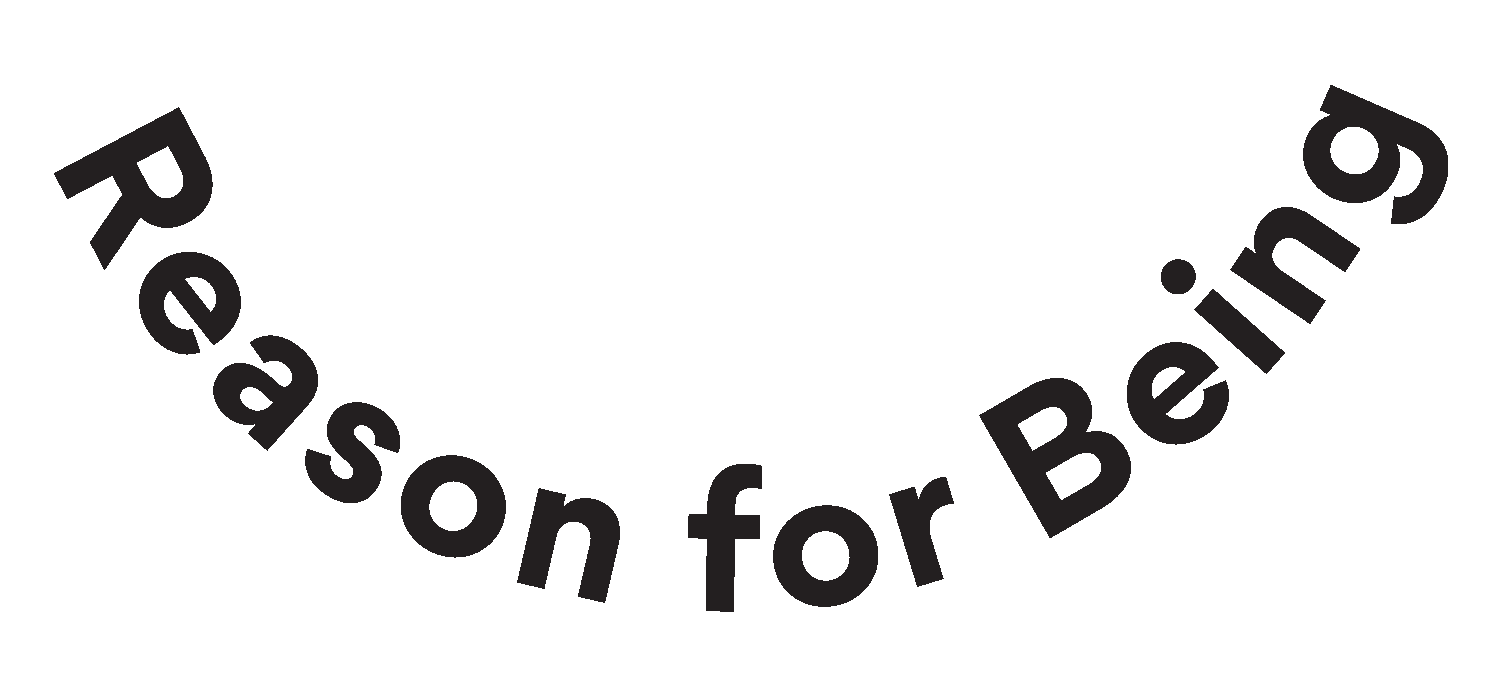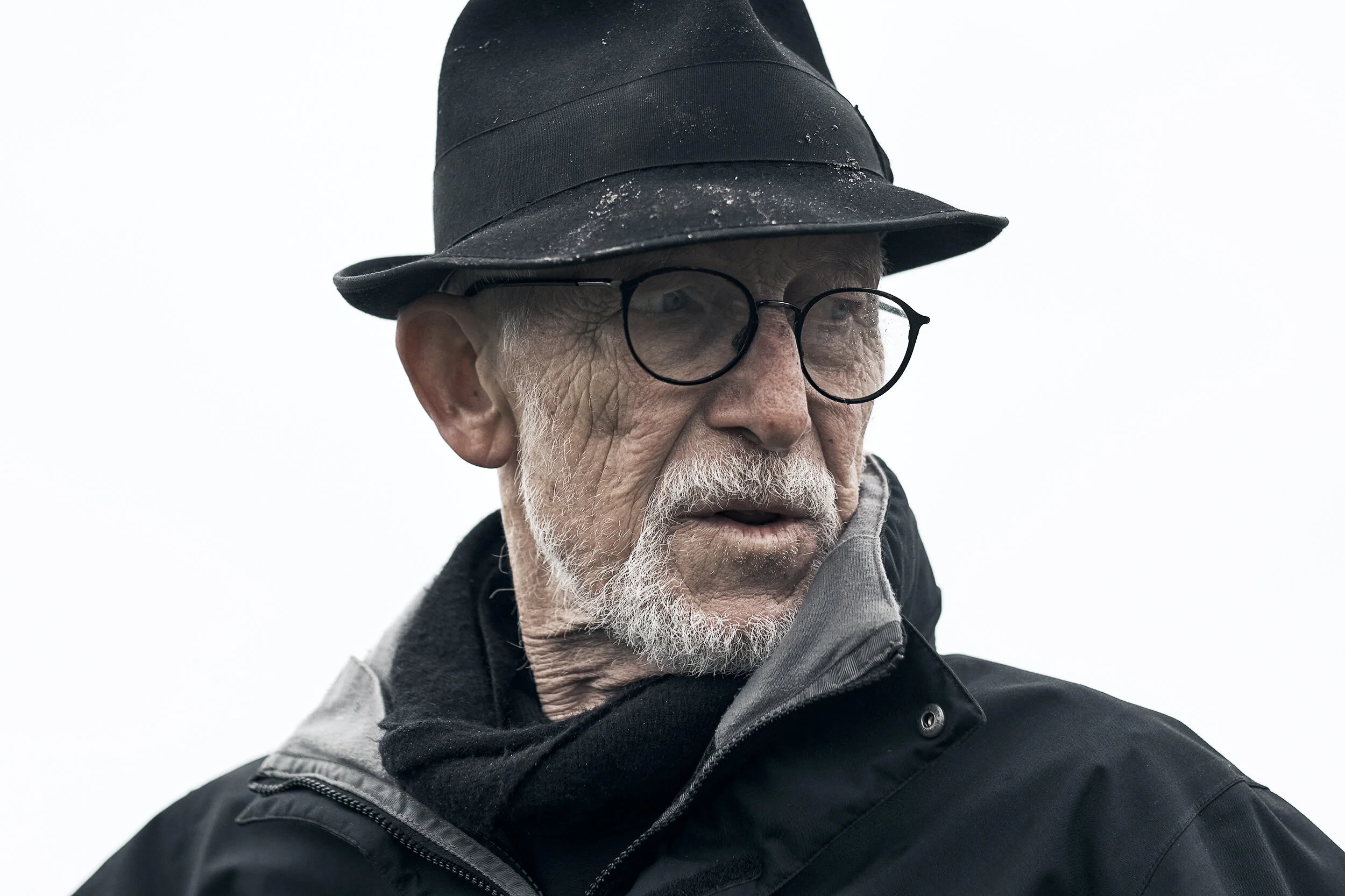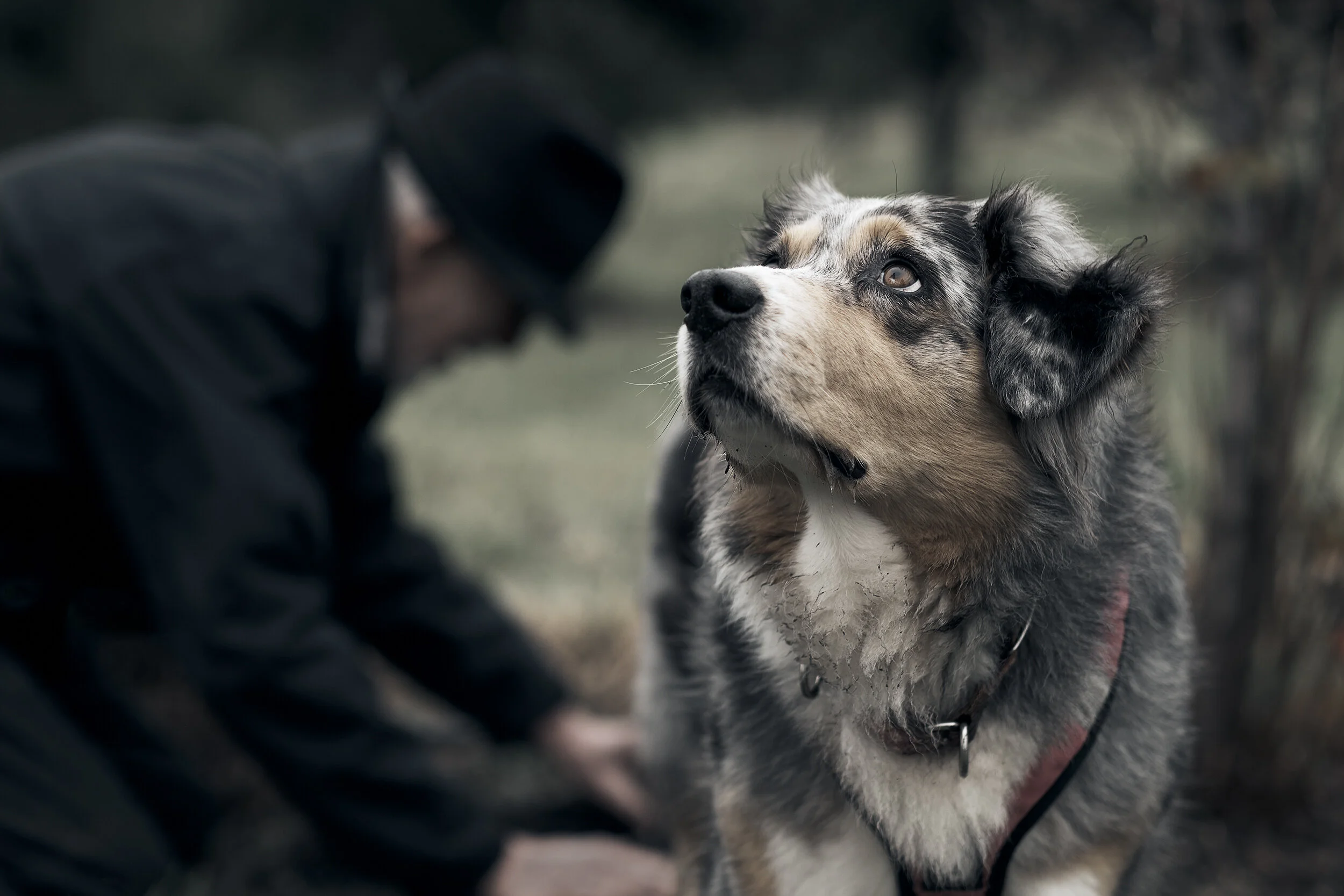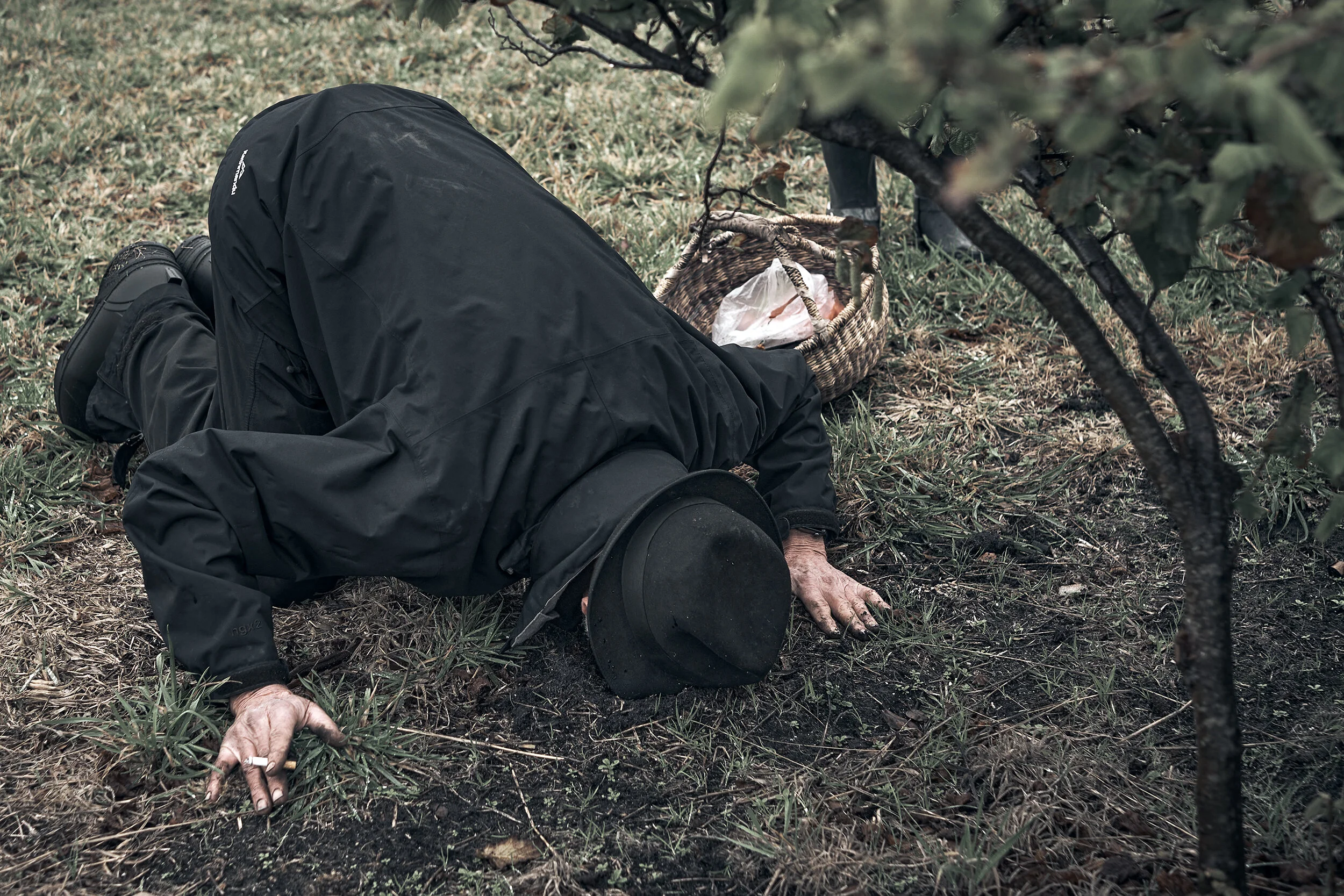Reason #4 / Nigel Wood / Truffle Grower
Lord of the Truffles…
Scroll ↓
Nigel Wood / Truffle Grower
Nigel Wood is one of Australia's pre-eminent truffle experts. In 2002, along with his wife Ruth, they founded Truffle Paddock - their own truffle farm located in Grantville, in Gippsland, Victoria. Their paddock now produces around 40kg of seasonal French black winter truffles each year. Nigel is also the founder of Truffle Melbourne - the annual event that has become the most extensive truffle festival program outside Europe. I met Nigel in 2014 when I was commissioned to photograph an advertising campaign to help launch his inaugural truffle festival…
These photographs of Nigel were captured during a scheduled truffle hunt on his farm in June 2021, just a few days after severe storms smashed through Eastern Victoria. Unfortunately, Truffle Paddock didn't escape unscathed, with dozens of old-growth trees succumbing to mother nature. Thankfully, no damage was incurred to their precious crop of ‘black diamonds’.
‘What I look forward to every year more than anything else; is opening the fridge door and getting that waft of truffle. It takes me back to that very first experience of a truffle “up the nose”...’
- Nigel Wood
Driving through the rain heading South from Melbourne towards Gippsland 100km away, I feel a sense of excitement and trepidation.
Excited to witness a truffle hunt for the first time - but worried about the prospect of documenting such an auspicious occasion in poor weather under grey skies.
To be honest, though, I'm happy just to be out of the house - camera in hand - after yet another prolonged COVID-19 enforced 'lockdown'...
My first ever truffle experience (that I can remember) was around ten years ago - at Melbourne's Vue de monde fine dining restaurant. Of the ten-course degustation menu, the highlight was a truffle risotto - paired with a glass of vintage port.
It's hard to describe in words my (then) virgin culinary experience.
What I remember could only be described as a 'sensory dance' - a grand culmination of unique aroma, taste, and the sixth sense of mystique and luxury.
‘Black pearl’, ‘diamonds of the culinary world’, ‘smelly underground mushroom’, and ‘earth testicles’ are some nicknames given to the expensive subterranean fungi - the truffle.
I am eager to learn more about them.
As I approach Truffle Paddock Farm, I am confronted with the devastation caused by the recent storms. Dozens of uprooted gum trees are piled on top of each other, crisscrossed blocking the farm's main driveway.
As per his instructions, I call Nigel to let him know that I have arrived. Moments later, he appears out of the woods over the hill in his Land Rover Discovery through a makeshift 4wd track.
We try our best to exchange pleasantries - not sure whether to shake hands, hug or fist pump - thanks, COVID-19.
It's been two years since we last saw each other - Nigel hasn't changed much.
At 71 years of age, he is characterised by his infectious, enthusiastic demeanour, and he (somehow) moves much younger. Tall, lanky with a grey beard - he is reminiscent of a 'skinny Santaclaus'; but dressed top to toe in black with his trademark fedora hat.
We head back up the 4wd track together in the ‘Landie’ as Nigel shows me around the farm.
After a short tour through the farm, we arrive at a cosy wooden hut situated near his paddock of truffles.
There we meet ‘Sue’; the truffle dog handler, with her two trained Aussie Shepherds: ‘Dora’ and ‘Trixie’. The trio is here to help sniff out Nigel's buried treasures.
I ask Nigel why he uses dogs instead of pigs?
Nigel: ‘You have to be mad to use pigs - unless it's for PR. They are animals that forage for truffles in the European natural habitat - that's where the mystique comes from when it comes to using pigs. But generally speaking, pigs will eat their finds, that's why we use dogs instead. For them, it's a game - most dogs won't eat a truffle they find. It's straight out scent training - similar to bomb detection or customs (dogs).’
‘You don't want them to find just any old truffle, though; ideally, you want them to seek out the ripe ones. Sues' dogs basically do that; I've worked with her since 2014 - she got into truffles by accident. As breeders of Aussie Shepherds, she was looking for an activity to keep the dogs active in winter.’
After some coffee, we head out to 'the paddock’ - Sue, Dora and Trixie leading the way.
Nigel follows, carrying an old wicker basket containing some gloves, a small shovel and some pin markers with orange ribbon.
It doesn't take long before one of the dogs finds a 'scent' amongst the row of oak trees. I observe as Sue places an orange-ribboned marker in the ground, as she rewards her dogs with a treat.
Nigel approaches the spot and immediately gets on his hands and knees.
As I watch with curiosity, I am stunned to witness what he does next. Nigel literally face plants the earth and buries his nose into the dark soil. With his arms out each side, it's almost as if he is worshipping Mother Earth.
As I snap away, documenting the process, I notice that he has a cigarette in his right hand, how ironic.
As he sits back up, Nigel contemplates for a moment - and starts digging carefully around the marker with his bare hands. As he gets further into the soil, he begins to dig around what looks like a small ball of dirt.
Eventually, he carefully pulls out the truffle covered in a layer of soil. He looks at it intently like he's found a piece of gold and cups it lovingly in his hands up to his nose.
The process feels almost spiritual and reminiscent of a scene out of The Lord of The Rings movie.
Curiously, I ask Nigel about what I just witnessed?
Nigel: ‘I am smelling for the truffle aromatics - that smell is kind of in the back of my brain. If it smells ripe (enough), it's ready for harvest. If not, I will leave it, mark it, and come back at a later time when it's ready. In the meantime, you don't want to disturb the soil around it because the truffle has fine, spiderweb-like roots connected to the host tree's roots. You don't want to break that - it's like cutting off their lifeline. I use my hands mostly to avoid damaging the outer truffle with shovels.’
Sue, her dogs, and Nigel eventually uncover just over 1kg of truffles in 90 minutes; at $2500 per kilogram, it seems like a good morning's haul.
We retreat to the ‘hut’ where Nigel carefully washes off the soil around the truffles to reveal his gems in all its textural glory.
Later, he and wife Ruth spoil us with brunch; of truffle-scrambled eggs paired with a glass of Black Truffle Espresso Martini.
Before leaving, Nigel gifts me one of his prized nuggets wrapped in some paper towel in a small plastic container. He instructs me to keep it in the fridge and replace the paper towel every 24 hours. Truffles lose moisture and need to be kept dry as possible; they actually shrink every day.
For the next week, I shave his fresh truffle onto everything...
A couple of weeks after the farm visit, I meet with Nigel again. I want to learn more about his passion for truffles.
I begin by asking how 'it' all started?
Nigel: ‘In 2002, my wife Ruth and I bought the farm initially with a plan to create a vineyard. But Ruth's brother, who happened to be a winemaker, advised against my mad idea.’
‘That's when the truffle idea came about,’ says Nigel.
After a successful career in international services and senior product marketing roles with leading brands, including the Universities of Melbourne and Monash, and as CEO of the Royal Australian College of GP's, Nigel was looking to invest his hard-earned money into 'something'.
He came across an opportunity to invest in a startup truffle farm in Tasmania - the first big farm in that State. He liked the idea of a non-traditional agricultural industry.
‘A high-value crop which uses scarce water resources wisely’ says Nigel, ‘unlike some other agricultural industries like irrigated dairy in high rainfall areas. But, I didn't know much about them (truffles) at the time.’
He invested $60,000 in the managed development scheme. Not far from retirement, the expectation was that he'd derive some income from the project to fund his retirement.
Unfortunately - it turned out to be quite a scam...
For more on that story, Nigel says to Google: Truffles scheme digs up investment worries - 7.30 - ABC.
Around the same time, he bought 400 supposedly 'inoculated truffle trees' (host trees) for their own small truffle farm in Gippsland from the same Tasmanian startup business.
Nigel: ‘But they were not productive...It was an absolute disaster. The trees were poorly inoculated and had j-roots because they were sitting in the pots for too long, resulting in poor growth. The trees were also cross-contaminated with the wrong kind of fungus which outcompetes the truffle you want to grow.’
Truffles are the fruiting body of mycorrhiza, just like above-ground mushrooms. Their host trees – usually hazelnut or oak trees - need to be ‘inoculated' (infected with truffle spores) onto their roots. The truffle mycelium forms a symbiotic relationship with its host tree, with each feeding the other.
By this time, Nigel was the Secretary of the National Truffle Growers Association. The group created a new standard for truffle inoculation to prevent 'cowboys' like those of the disastrous Tasmanian project. An accreditation regime was set up which, the Growers Association adopted. He bought a further 200 trees from a newly accredited nursery.
I ask if he ever lost faith during that time?
‘Of course…’ says Nigel.
‘I spent $100,000 of my Superannuation money setting up the truffle farm with the first 400 dodgy trees, so there were plenty of times I thought this was a total train crash.’
‘Out of the first 400 trees, I think I've only had three (trees) that have fruited, and out of the other 200 good trees, about forty of them are now producing; they are still very young at around 7-years old.’
I ask if he recalls finding his first-ever truffle on his farm?
Nigel: ‘It took four years, but I recall it like it was yesterday. The best thing about it was, it happened on the 1st of April, 2015 - April Fools Day. I'm walking the paddock fixing sprinklers, and I looked over and right there, sitting on the surface, was what looked like a truffle. I crawled over on my hands and knees and picked it up. It had no aroma as it was early autumn, but it was a deadset truffle. So I picked this thing up, looked at it really closely and screamed out at the top of my voice - FUCKING AMAZING! I just laid there for a while on my back in the middle of the paddock.’
‘I airdried it and, I've still got that truffle - it sits as a paperweight on my desk next to the very first white truffle.’
‘That Winter, we produced half a kilo, and basically since then, our harvest has doubled each year. We now produce around 40kg each season. We sell our fresh truffles to chefs and retail customers all over Australia.’
I ask Nigel if he can remember his first truffle experience?
Nigel: ‘I don't recall the exact occasion, but I remember the sensation - the first “on the nose”. I remember the distinct smell of truffle, which was this dirty; sexy, filthy, kind of wet socks, mad aroma; that's what I remember.’
‘What I look forward to every year more than anything else; is opening the fridge door and getting that waft of truffle. It takes me back to that very first experience of a truffle “up the nose”...’
I wonder if he thinks he has a spiritual connection with truffles and the land it comes from?
Nigel: ‘That's an interesting question - the one-word answer is YES - I do on a whole bunch of different levels. The more I learn about truffles and how they grow, the more I really appreciate Nature and want to better understand the science of interaction between trees and fungus. The Wood Wide Web; the way trees use fungus and fungus uses trees to communicate with each other, is fascinating. I also think about indigenous people in Australia and their engagement with the land and appreciation for it - I want to learn more about that. Australia is believed to have more indigenous truffle species than anywhere else in the world. There are thought to be more than 1500 truffle species in Australia, of which only around 500 have been documented.’
What keeps driving his passion, I ask?
Nigel: ‘The buzz of it. That aroma sneaking out of the fridge every year - there is always something mysterious around the next corner. Also, we (Australia) are now the third-largest truffle growing country in the world after France and Spain. I've seen what these countries can do as an industry. Generally speaking, we are not good at value-adding to our crops in Australia. I want to value-add through making truffle-based products. I want to emulate those other countries - Australia could leapfrog the European nations within a decade. Western Australia alone (where all the HUGE truffle farms are) produces over 20+ tonnes of truffles, of which 85-90% gets exported. On Seven Day Road, Manjimup in Southern Western Australia, just on that one road alone, there would be easily 80,000 truffle trees, I've got 600. In Victoria, we'll produce around 3 tonnes of truffle this year.’
In 2014, when I first met Nigel, he was just about to launch the inaugural Truffle Melbourne Festival – which he founded. I ask how this idea came about?
Nigel: ‘In 2013, there was an International Truffle Conference in Spain. Following the four day conference, we joined a 10-day “research and development” tour through Spain and Southern France. That was the best time that Ruth and I spent; anywhere in the entire world together - the most fabulously organised trip.’
‘Travelling into all those little towns celebrating truffles in the middle of its European season was terrific. Every eatery in every city, from the high-end restaurants to worker's cafe's, had multiple truffle dishes on the menu. If these tiny towns can host a truffle festival, I thought the idea would surely work in food-mad Melbourne. It turns out I was right. The annual winter truffle festival program has grown to more than 80 events, including a weekend festival. The program usually runs from June through to August. It includes truffle hunts at several Victorian truffle farms, truffle dining events, and chefs' education programs.’
‘Part of the success is because this “bloke” I know took these fantastic photographs to help promote and launch the inaugural festival back in 2014,’ he laughs.
During my research for this story, I came across what appears to be a growing 'black market' in the truffle industry. I ask Nigel to elaborate?
‘Oh yes...’ says Nigel. He goes on; ‘in the mid-90s, The Australian Growers Association lobbied the Australian Government to ban Tuber Indicum - the "Chinese Truffle". About a quarter of truffles sold in France as black truffles are actually cheap imported Chinese truffles - wholesalers cut it with the real stuff - it's like drug dealing. So counterfeiting is big business – there was a great exposé of this in the US 60 minutes program some years ago,’ he says. Those truffles virtually have no flavour or aroma but look almost identical to the real thing. I first saw them in China, in big sacks sold as pig food at the markets. If that truffle got into Australia, it would rampantly outproduce the European truffle - we don't want those spores anywhere near Australia.’
To conclude, I ask if his Fedora hat has any sentimental meaning?
‘It actually does. The hat goes back to 'that' trip to Spain in 2013/14 where I bought it; that's where that hat goes back to - the hat is an icon...’














